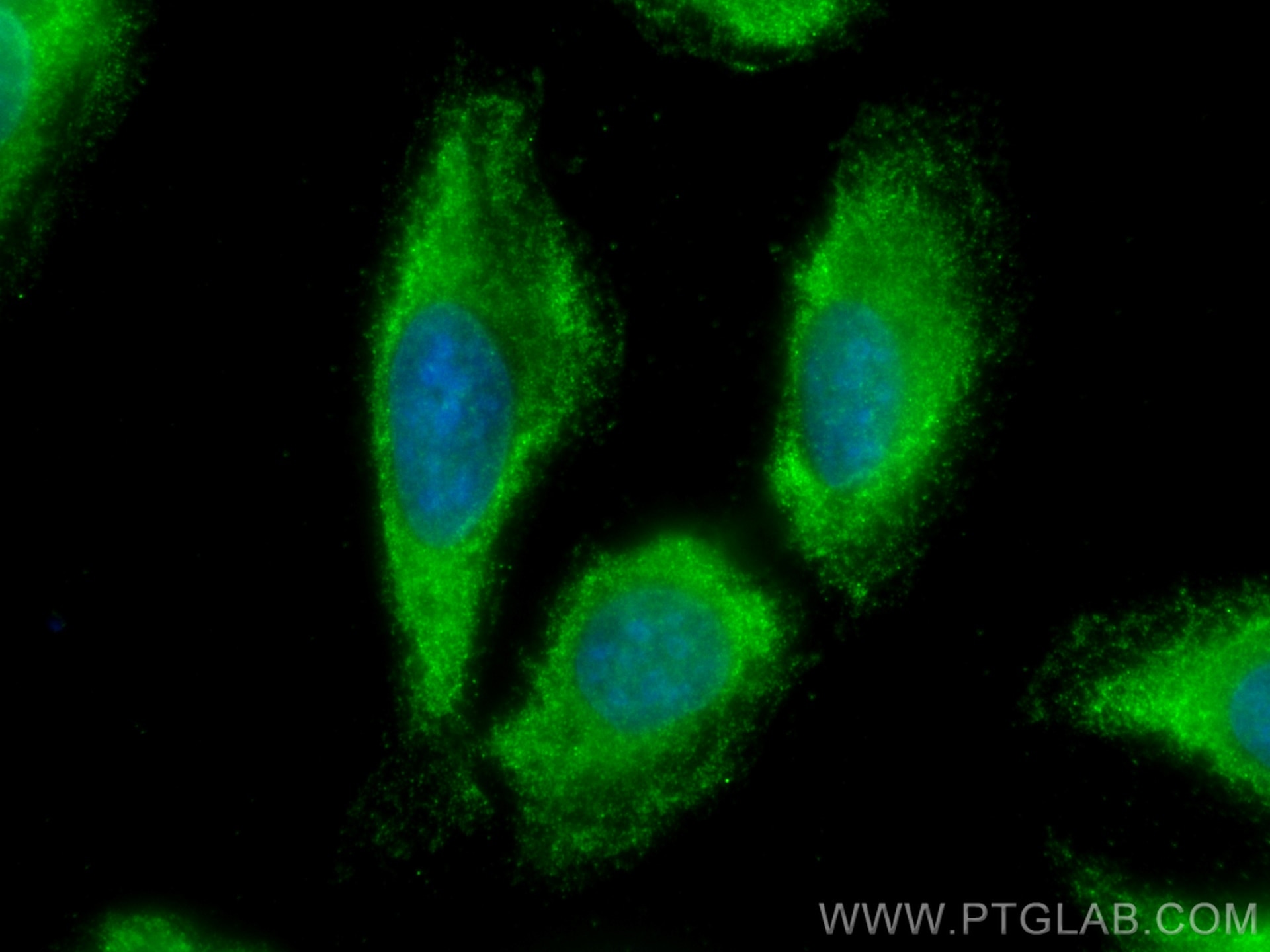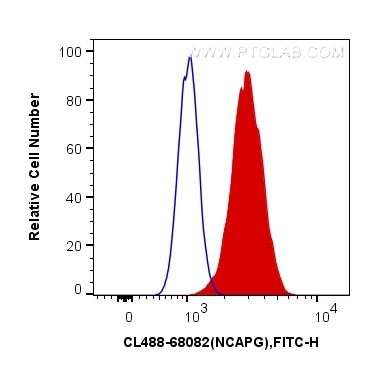NCAPG Monoklonaler Antikörper
NCAPG Monoklonal Antikörper für IF/ICC, FC (Intra)
Wirt / Isotyp
Maus / IgG2b
Getestete Reaktivität
human
Anwendung
IF/ICC, FC (Intra)
Konjugation
CoraLite® Plus 488 Fluorescent Dye
CloneNo.
2D4D3
Kat-Nr. : CL488-68082
Synonyme
Geprüfte Anwendungen
| Erfolgreiche Detektion in IF/ICC | U2OS-Zellen |
| Erfolgreiche Detektion in FC (Intra) | U2OS-Zellen |
| Erfolgreiche Detektion in FC | U2OS-Zellen |
Empfohlene Verdünnung
| Anwendung | Verdünnung |
|---|---|
| Immunfluoreszenz (IF)/ICC | IF/ICC : 1:50-1:500 |
| Durchflusszytometrie (FC) (INTRA) | FC (INTRA) : 0.40 ug per 10^6 cells in a 100 µl suspension |
| Durchflusszytometrie (FC) | FC : 0.40 ug per 10^6 cells in a 100 µl suspension |
| It is recommended that this reagent should be titrated in each testing system to obtain optimal results. | |
| Sample-dependent, check data in validation data gallery | |
Produktinformation
CL488-68082 bindet in IF/ICC, FC (Intra) NCAPG und zeigt Reaktivität mit human
| Getestete Reaktivität | human |
| Wirt / Isotyp | Maus / IgG2b |
| Klonalität | Monoklonal |
| Typ | Antikörper |
| Immunogen | NCAPG fusion protein Ag19926 |
| Vollständiger Name | non-SMC condensin I complex, subunit G |
| Berechnetes Molekulargewicht | 1015 aa, 114 kDa |
| Beobachtetes Molekulargewicht | 114 kDa |
| GenBank-Zugangsnummer | BC068467 |
| Gene symbol | NCAPG |
| Gene ID (NCBI) | 64151 |
| Konjugation | CoraLite® Plus 488 Fluorescent Dye |
| Excitation/Emission maxima wavelengths | 493 nm / 522 nm |
| Form | Liquid |
| Reinigungsmethode | Protein-A-Reinigung |
| Lagerungspuffer | PBS with 50% glycerol, 0.05% Proclin300, 0.5% BSA |
| Lagerungsbedingungen | Bei -20°C lagern. Vor Licht schützen. Nach dem Versand ein Jahr stabil. Aliquotieren ist bei -20oC Lagerung nicht notwendig. 20ul Größen enthalten 0,1% BSA. |
Protokolle
| PRODUKTSPEZIFISCHE PROTOKOLLE | |
|---|---|
| IF protocol for CL Plus 488 NCAPG antibody CL488-68082 | Protokoll herunterladen |
| FC protocol for CL Plus 488 NCAPG antibody CL488-68082 | Download protocol |
| STANDARD-PROTOKOLLE | |
|---|---|
| Klicken Sie hier, um unsere Standardprotokolle anzuzeigen |



